the lavaforming pavilion at the 2025 venice biennale
s.ap architects’ Arnhildur Pálmadóttir and Arnar Skarphéðinsson are landing at the 2025 Venice Architecture Biennale with their Lavaforming proposal, representing Iceland‘s national pavilion for the first time through an open call. Imbued with speculative thinking, the project investigates how the brutal force of lava can become a valuable resource capable of lowering atmospheric emissions through its future use as a building material. ‘In our story, placed in 2150, we have harnessed the lava flow, just as we did with geothermal energy 200 years earlier in Iceland,‘ says Arnhildur. The idea springs from the country’s geological location on a rift between two tectonic plates, which causes frequent seismic activity on the island, including the creation of impressive lava fields. Throughout history, Iceland’s volcanic activity has been perceived as a local disturbance and even as an otherworldly event.
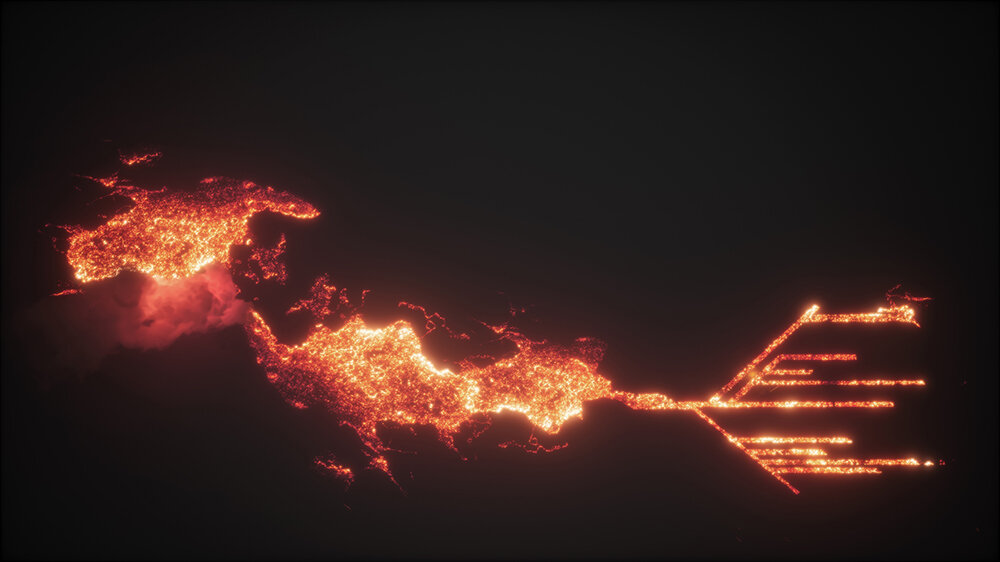
Lavaforming proposal for the Venice Architecture Biennale | rendering © s.ap architects
exploring the power of lava as a renewable building material
As argued by the architect and her son, the potential of using lava as a new, renewable construction material could provide enough resources to build entire cities without harmful mining or energy practices. The concept serves as a practical proposal and a metaphor for a paradigm shift in architecture, urging bold, creative thinking to address current environmental challenges and outdated practices. In an exclusive conversation with designboom, Arnhildur and her son Arnar walk us through their speculative Lavaforming Pavilion heading to the 2025 edition of the Venice Architecture Biennale, highlighting the power of lava, its political implications, the future of cities, and more.
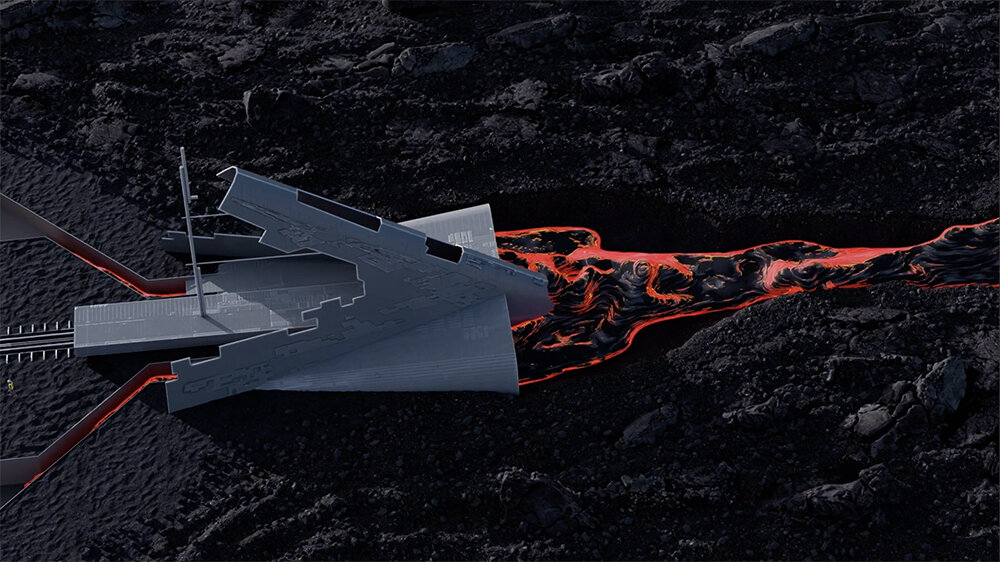
envisioning the potential of lava as a building material | rendering © s.ap architects
interview with Arnhildur and arnar from s.ap architects
designboom (DB): Can you tell us more about yourselves, your journey into architecture, and your approach to the practice?
Arnhildur Pálmadóttir (AP): My journey began after my Master’s at IAAC in Barcelona, which encouraged a particularly speculative and modern way of thinking about buildings, architecture, and construction. So, in a sense, you either get ruined for life or head down a good path (laughs). You always have to think about something new, about how to tackle architecture through other dimensions. When we set up the studio, we were concerned about how architects respond to climate change; that’s why it was important for us to take a speculative approach, as it can launch us further into the future without getting too caught up in existing systems. While we enjoyed pushing this agenda, we still needed to think about clients, money, etc.. So, we started with a mix of traditional architecture and some speculative projects.
Then, when Arnar was in architecture school, we started moving further toward speculative thinking. I also run the Icelandic branch of the Danish architecture company Lendager, which specializes in reusing building materials. So these are the two paths I’m currently on, with Arnar part of s.ap architects’ speculative projects.This leads me to our Lavaforming project. We decided to look at the different kinds of building materials available in Iceland, which are few. We don’t have wood or trees; we don’t have clay for bricks. So we need to assess what we do have, which is basalt and stone. Today, stone is crushed and added to sand to use as a concrete mix. However, we noticed how emitted energy is required for these methods, so we started looking at alternative materials.
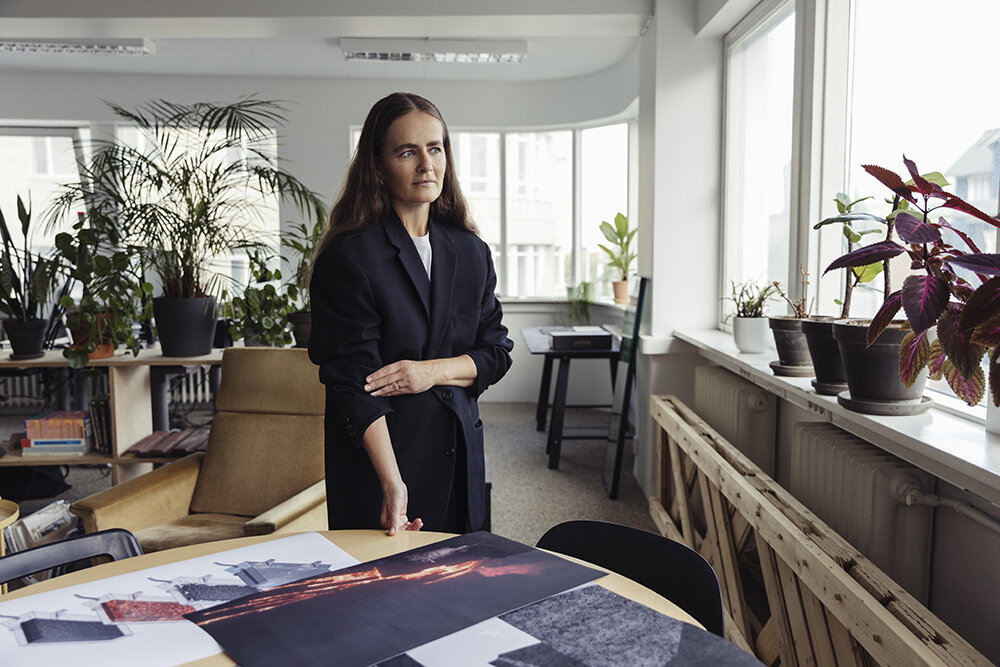
Icelandic architect Arnhildur Pálmadóttir | image © Aldis Palsdottir
Arnar Skarphéðinsson (AS): In my case, I’ve always been around architecture and my mother (Arnhildur). I remember being in Barcelona at the IAAC school and her showing me samples of wood and drawings, which I love. As a kid, I’d always seen architecture as a speculative pursuit, with large dreams or discussions about the practice.
AP: I like that. As practicing architects, we should maintain our childlike curiosity and dream big. Technology seems always to follow and push the agenda if ideas are big enough. One example in Iceland is the geothermal energy. About 100 years ago, using hot boiling water from the ground was probably considered science fiction. But, suddenly, technology evolved, and we could use it! We can now heat whole communities with it and use it for bathing; this has thrown Iceland into modern times. What was Sci-Fi before is now a reality, and we are approaching Lavaforming similarly.
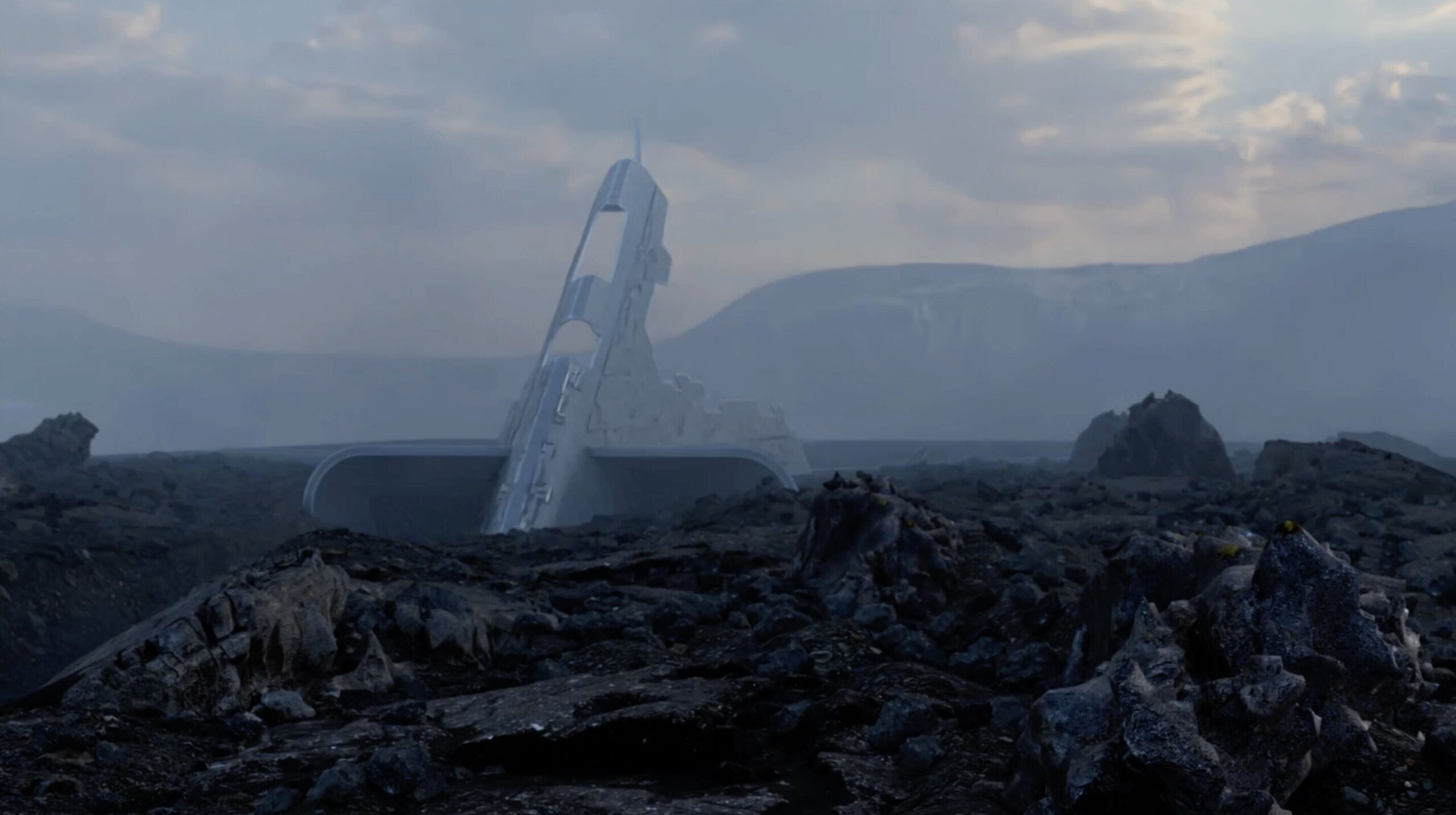
the proposal is set in the year 2150
DB: Speaking of your Lavaforming Pavilion — in what way does it respond to the Venice Architectural Biennale’s 2025 theme, ‘Intelligens. Natural. Artificial. Collective’?
AP: It ticks all the boxes. To give you a bit of background on the project: we’re going to situate ourselves 100 years in the future because the eruptions happening on the rift and peninsula of Iceland will keep happening, on and off, for the next century. We’re putting up protection walls everywhere; engineers are leading on this, but we want to integrate architectural and design-oriented thinking into the process. We want to speculate what will happen and what this will look like in 100 years.
In the process, we will leverage lava flow models from scientists, calculating possibilities where lava could flow so protective infrastructure can be set in place. That’s one type of intelligence we are seeking. We also want to react to that with our 3D modeling programs; this is where human intelligence comes in. And finally, there’s nature’s intellect, using its power to push up the lava. We will link all of those intelligences and create cities and forms that will probably hold a completely different aesthetic from the buildings we see today. I think the reason is nature’s integration into the creative stream.
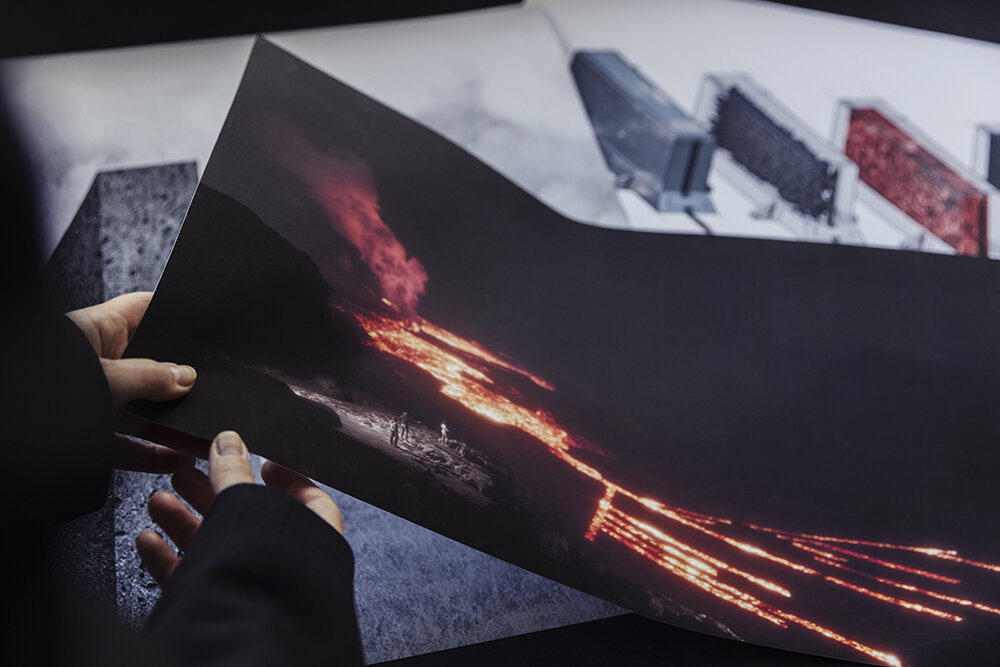
image © Aldis Palsdottir
DB: Structurally, what promising and unique qualities does lava offer as a building material?
AS: We were looking at lava to fulfill all the qualities a material should have for a building. We’re now getting ready to conduct actual tests to see if we can control all of these qualities. Nature shows us that lava can be puffy, light, and porous, and we can assume that that would be used as insulation. However, when the lava cools slowly and under a lot of pressure, it becomes solid, like a structural material. If it cools quickly, it becomes glass. Applying these variations to architecture — instead of having everything cut into different modules and layers, one wall could feature a gradient of all these properties; on the inside, it would be more porous, and on the outside, more solid.
DB: Walk us through the experience of the Lavaforming Pavilion. How do you anticipate visitors interacting with it?
AP:We will have some tangible materials displayed at the Lavaforming Pavilion so that people can experience the qualities of the lava. Still, the pavilion at the Biennale will mostly encompass visualizations and animations with explanations documented through a speculative film. We want to tell stories from the perspective of people living in this new world; we want to envision how they will pass through it in their daily lives.
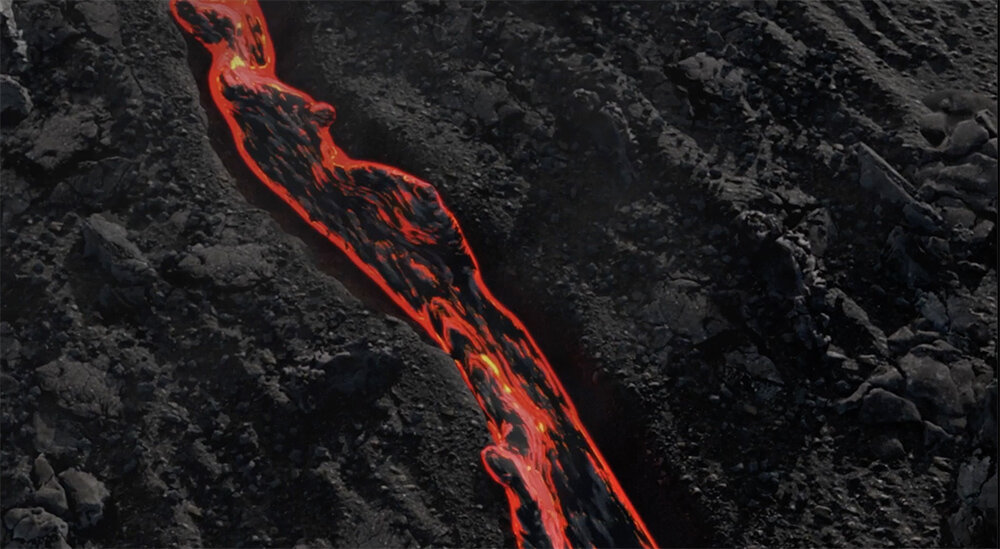
rendering © s.ap architects
DB: Are there any other material(s) that you’d like to experiment with or develop in the scope of architecture?
AP: For now, we’re focusing on the concept of Lavaforming as something that could be applied to many other places in the world, for example, where you have extreme heat. It’s a material we haven’t considered using before because it is considered ‘extreme’ in its essence. But as we’re now dealing with unprecedented weather patterns, lava’s potential should be harnessed. There is indeed a lot of talk on different biomaterials, but most of them cannot be maintained in extreme climates. We also want to cast a light on the housing market and the human right to have shelter over your head.
DB: Can you elaborate on that last point?
AS: Well, one exciting aspect of lava is the political nature that arises when we start using it as a material. It raises the question of who will own the material. It opens up a really interesting opportunity. Who owns the city if we take out a trench and create a town in two weeks? Is it the people? Is it some private developer? We also looked into a constitution written in Iceland in 2012 that the government rejected. It stipulates that lava is owned by and is for the people; in other words, the people own all resources underneath a specific depth. We’re interpreting it as such, that lava is owned by the people, and we want to see what effect it has on society when we can create a huge city and nobody, or everyone owns it. Going back to your previous question, I think many materials have direct political implications, and the use of architecture can change how our laws or ownership are perceived. It’s essential to rethink the relationship between extraction and people.
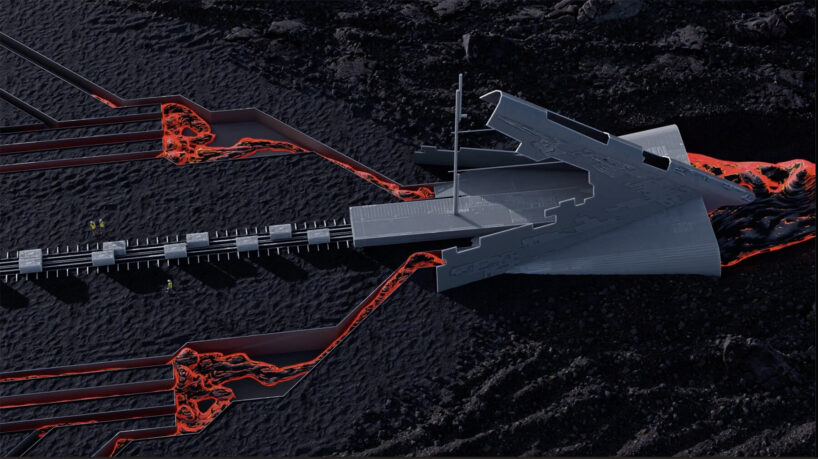
speculating how lava will be harnessed from the ground | rendering © s.ap architects
DB: Speaking of political implications, the word ‘sustainability’ has gotten its fair share of criticism. Many experts argue that it has been corrupted and tossed around for certain interests, rendering it ‘meaningless’ in some cases. What are your thoughts on that? And how would you define sustainability?
AS: It’s pretty crazy to use the word or to market architecture as green when CO2 emissions are rising yearly. I think we will look back on that in a few years and think to ourselves: how stupid were these people? What reality were they living in?
AP: Sustainability is greenwashed, and the certifications we issue around it are pointless; they just offer false comfort. The real problems are still not resolved. We need to stop using this word or maybe use more words to describe what we’re doing because sustainability is just a hat over many things that are not going in the right direction. And this project is a response to that: we feel that not enough is being done through the system, so we’re taking ourselves out of the system. It’s also the reason why we’re pursuing the Lavaforming project and pavilion without a client. We’re catering to all humans.
AS: And I think this idea is prone to being co-opted for something else. That’s why we touch on its political nature. In theory, using lava would be a zero-carbon approach or an approach with only some level of carbon, the same amount coming out from a natural eruption. However, if the wrong people and systems adopt this building method, we will just keep destroying landscapes like we do today.
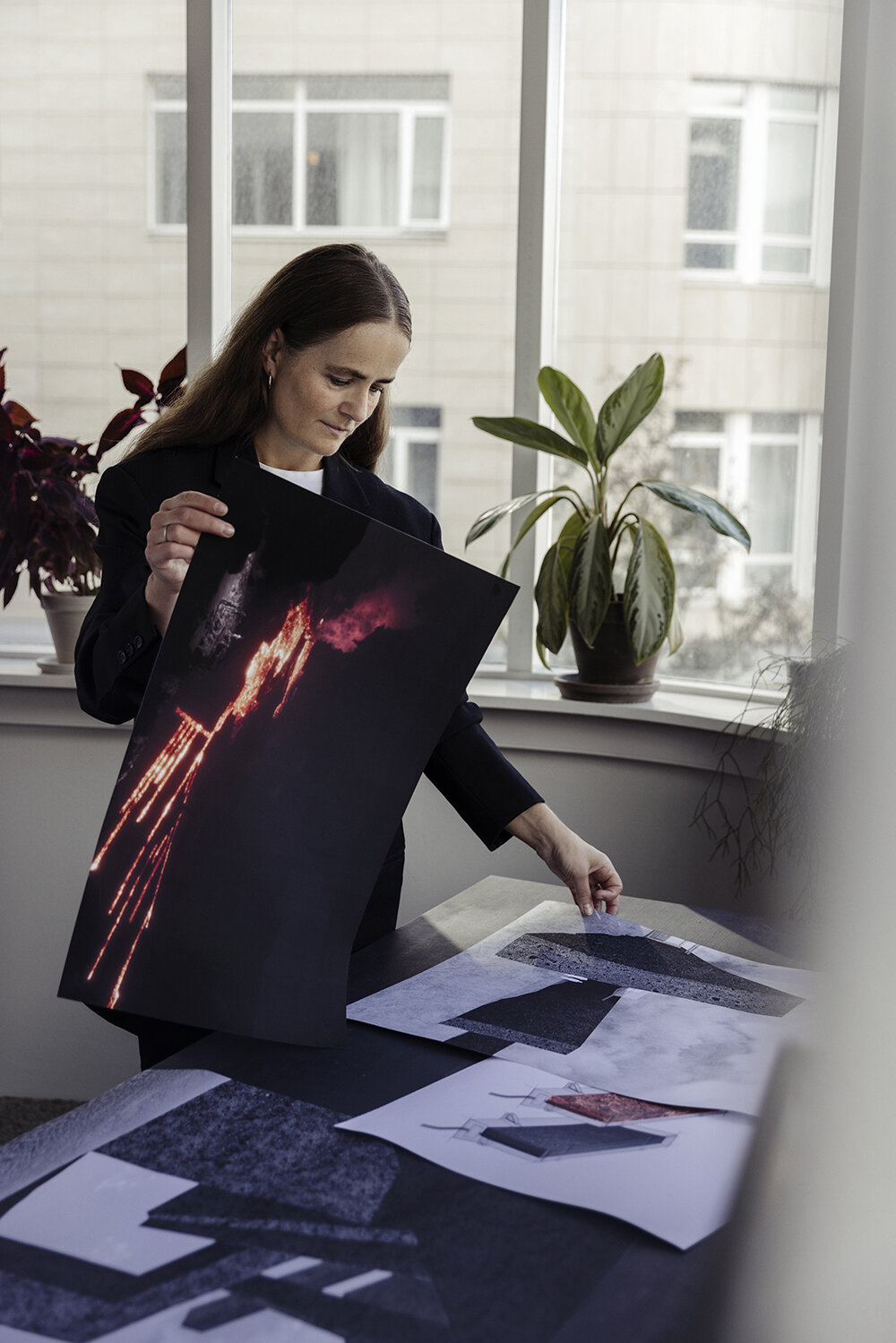
image © Aldis Palsdottir
DB: You mention that many of our current methods have been deemed obsolete or harmful in the long term. Can you elaborate and give examples regarding these practices?
AP: The demolition of buildings is probably the most harmful because it causes considerable emissions. Of course, there’s also the overuse of materials in buildings; there are so many unnecessary layers! Stripping it down to the minimum of materials and choosing materials with the lowest emissions (either natural or close to you) may be the best way to design at the moment so we can better calculate what we’re doing. We’re also thinking about the life cycle of a material; how will it end? Where will it end up? With so much demolition still happening in the world, we can efficiently utilize the discarded rubble and rebuild it in a new way.
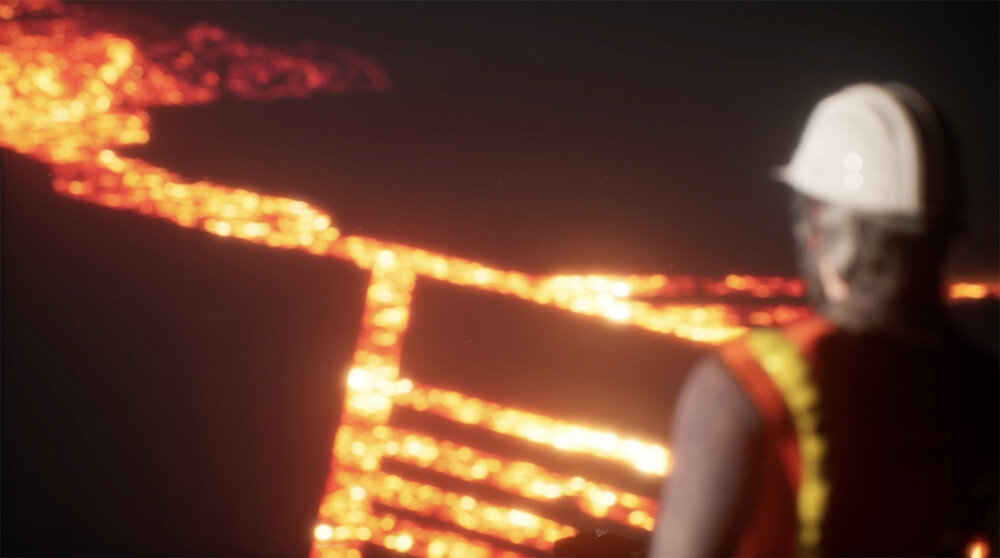
the Lavaforming Pavilion will speculate a future world | rendering © s.ap architects
DB: Seeing as your work is fueled by speculative thinking, how do you envision new technologies evolving alongside your quest for a more regenerative approach to architecture?
AS: In terms of Lavaforming, if we go full force into the building with it, just handling the heat will require us to create new technologies. It’s hard to pinpoint what innovations will be created and for what purpose they will be used, but that’s what our film will touch on a little at the Biennale. We believe in technology, but we think it’s being used for the wrong things in many cases. Again, this emphasizes the political aspect: it’s about who owns the technology and who it serves.
AP: That’s why we want to use this project to link up with the geologists’ data. They’re monitoring the inflation of the lava below the surface, conducting earthquake assessments, and creating flow models. It’s crucial to establish this interdisciplinary connection between designers, architects, scientists, and technology. Almost everyone uses BIM technology, but probably 1% of them are adopting scientific data, and that’s what we’re trying to cast light on.
AS: At the end of the day, this kind of project is out of this world. Every decision we make is going to create an obstacle. We will have to carve out different pathways in every decision we make. This will influence how the discipline in Iceland will be thought about in the future. It’s an exciting project that encourages us to reassess everything about architecture and its interdisciplinary nature.
